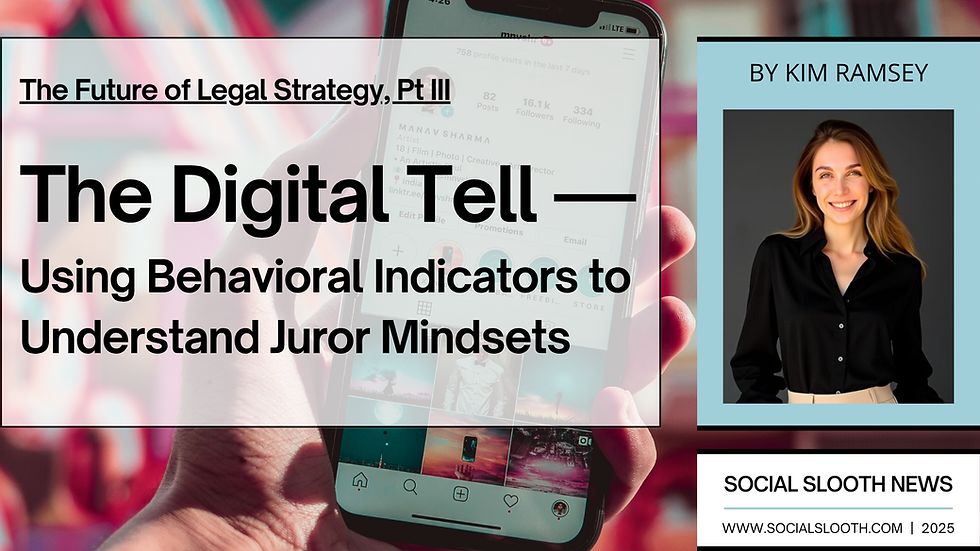The Analyst’s Edge: Strengthening Jury Research with Intelligence Techniques
- Heather Hernadi

- Aug 5
- 2 min read

When people think about jury research, they often imagine demographic profiling, pre-trial surveys, or social media scans. But there’s an often-overlooked discipline that offers powerful tools and insights: intelligence analysis.
At Social Slooth, where we merge open-source intelligence (OSINT) techniques with legal strategy, we’ve found that applying intelligence frameworks to jury research leads to sharper insights, more reliable profiles, and ultimately smarter trial strategies.
Here’s how the two worlds intersect.
Structured Thinking in a Sea of Data
Intelligence analysis isn’t just about gathering information; it’s about evaluating, synthesizing, and drawing conclusions from fragmented, sometimes conflicting data. In jury research, especially social media investigations, this approach is critical.
A Facebook comment, a LinkedIn post, or an Instagram like might seem innocuous on its own. But when pieced together with voting records, public affiliations, or even engagement patterns, a deeper narrative can emerge. This mirrors the way intelligence professionals build profiles from bits of public and private domain data.
Bias Mitigation Through Analytic Rigor
One hallmark of intelligence analysis is the use of structured analytic techniques - tools designed to expose assumptions and reduce cognitive bias. Jury consultants, like analysts, face the risk of seeing what they want to see, especially when under pressure from clients with strong narratives.
Methods like “Analysis of Competing Hypotheses (ACH)” or “Key Assumptions Checks” can be adapted to jury research, helping trial teams explore multiple angles before locking onto a juror’s perceived leanings. These practices force us to ask: What else could be true?
From Backgrounds to Behaviors
Traditional jury research often leans heavily on demographics. But intelligence analysis encourages a focus on behavioral indicators, like how someone acts online, what causes they support, and how they interact with content or groups.
By borrowing this lens, we move away from oversimplified categories and toward nuanced behavioral archetypes. This allows for more informed decisions in voir dire, supplemental juror questionnaires, and pre-trial motions.
The Verdict: Better Questions, Better Strategy
At its core, both intelligence analysis and jury research are about asking the right questions and knowing how to interpret the answers. By blending the strategic mindset of an analyst with the legal instincts of a trial team, we create more robust, ethically sound, and litigation-relevant insights.
For legal teams who want to see the full picture, it’s not just about what jurors say or post. It’s about what the data means. And that’s where intelligence analysis can be a game-changer.
🧠 Let’s keep the conversation going. What structured techniques have you used to cut through bias in juror profiling? Drop your thoughts or questions in the comments — we want to hear from you!
🔍 For more insights at the intersection of OSINT and trial strategy, follow Social Slooth and Heather Hernadi on LinkedIn. Stay informed as we share tools, trends, and tactics to elevate legal investigations.
#SocialSlooth #SloothNews #JuryResearch #TrialStrategy #LegalTech #OSINT #LegalIntelligence #LitigationSupport #SocialMediaInvestigations #StructuredAnalytics #InsuranceDefense #TrialConsultants #PrivateInvestigators #LegalInnovation #VoirDire #BehavioralIndicators #LegalInsights #AttorneyTools #JurorProfiling



Comments